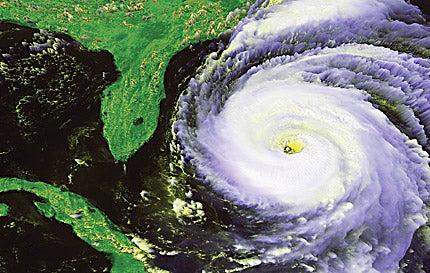 Weather happens, and the vast majority of us mere mortals will probably never understand it. WX (as it’s rarely abbreviated) is almost universally regarded as the subject pilots understand least and fear most. For most aviators, it’s flying’s great question mark. Some people may have a perfect understanding of Bernoulli’s principle, but still consider weather a mystery.
Weather happens, and the vast majority of us mere mortals will probably never understand it. WX (as it’s rarely abbreviated) is almost universally regarded as the subject pilots understand least and fear most. For most aviators, it’s flying’s great question mark. Some people may have a perfect understanding of Bernoulli’s principle, but still consider weather a mystery.
Technological advances now offer pilots more information about what’s happening in the sky or what’s expected to happen during a flight. Weather data is available everywhere, from the home computer, fax machine, cell phone and, of course, the cockpit. Here’s a look at the variety of options that are helping pilots make smarter go/no-go decisions.
DUATS—For the record, DUATS stands for Direct User Access Terminal System, and it’s a free FAA service available at www.duats.com. Two companies offer graphical representations of the service, TC DUAT and DTS. TC DUAT says they make it a priority to listen to pilots and their concerns, and they use those comments to enhance www.duat.com. Based on pilot comments, the DTC DUAT site is extremely user friendly. Data Transformation Corporation (DTS) offers graphics features such as weather overlay, the most current TFRs and enhanced flight planning charts. Regular updates to the powerful software are free.
Lockheed Martin—We’ve all been using this traditional flight service system (now subcontracted by the FAA) for years. Lockheed Martin will soon be launching FS21 (Flight Service 21st Century), which features enhanced phone service and an accompanying Web-based service. Pilots will be able to register their personal information, including personal minimums, so that Lockheed briefers can instantly know whether they are speaking with ATPs or student pilots and can tailor the information accordingly. Enhancements to basic phone service will allow distribution of the calls to flight service station (FSS) specialists with specific knowledge of a pilot’s geographic weather, topography and airspace. Online, pilots will able to obtain WX briefings, file flight plans, store user profiles and get graphical flight planning and additional weather information.
Jeppesen Dataplan—Jeppesen, world leader in aviation chart services, also offers weather information. The San Jose-based division of Jeppesen isn’t yet in the uplink business, but it has been offering a comprehensive, upscale service for nearly a quarter century. Jeppesen uses its own meteorologists along with NWS and international sources to develop weather information for flights around the world. The service is Internet-based (though phone briefings are available) and Jeppesen contracts through Weather Decision Technologies to offer all the standard products plus such exotica as lightning graphics via the U.S. Precision Lightning Network.
Taking The Weather With You
For weather “on the go,” several providers are competing for your business. Some offer their products online, while others offer their wares directly into your cell phone or cockpit display.
AccuWeather—This is an online consumer source that offers Cingular subscribers weather information on their cell phones. In addition to all the usual weather products for the United States and Puerto Rico, the site displays current conditions and forecasts for international locations. Merely type in the name of any major city, Cairns, Australia, for example, and the program will tell you that the temperature is 32 degrees C with partly cloudy skies and tomorrow’s high will be 34 degrees C with rain.
Digital Cyclone—This is another weather information provider. Digital Cyclone offers its data on the Internet, cell phones or PDAs. Digital Cyclone’s My-Cast products offer everything you’d expect from NWS’s weather services, plus you can loop the Doppler color radar picture through a limited range with three zoom levels based on any U.S. airport. Prices start at $13 monthly (plus setup fees), and Digital Cyclone works with practically every cell phone service available, including Cingular, Sprint, Nextel and T-Mobile.
Weather Solution Inc.—WSI offers weather products not only for business and commercial aviation applications, but also for newspaper and TV media, energy and marine interests plus a plethora of other business applications. Pilots will likely find WSI weather products available for flight planning at FBOs, though they also provide a continuous stream of satellite uplink information to a variety of cockpit displays. WSI’s NOWrad weather mosaic provides current precipitation data and includes METAR and TAFs, TFRs, SIGMETs and AIRMETs, and winds and temperatures aloft—all through the Sirius Satellite Network. If you get bored, you can listen to Howard Stern.
XM Weather—XM Weather has become all the rage since Garmin introduced a method of receiving the weather satellite downlink at minimum cost. The $2,495 Garmin 396 portable GPS was specifically designed to receive XM’s weather products in addition to its standard navigation talents. Using a pair of satellites (named “Rock” and “Roll”) in geosynchronous orbit above both coasts, XM transmits everything from winds aloft, high resolution NEXRAD (Next Generation Radar, since you asked), METARs, TAFs, Airmets, Sigmets to echo tops, precipitation types, freezing levels, surface pressure and even the ever-changing TFRs. For more, check out the resources information.


